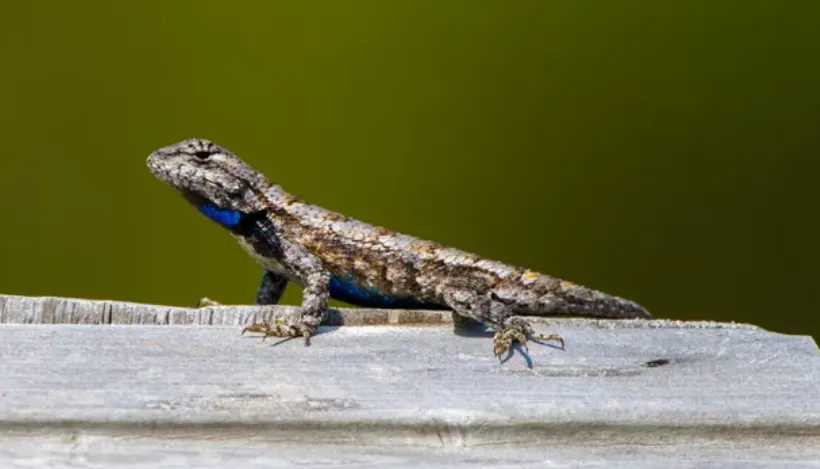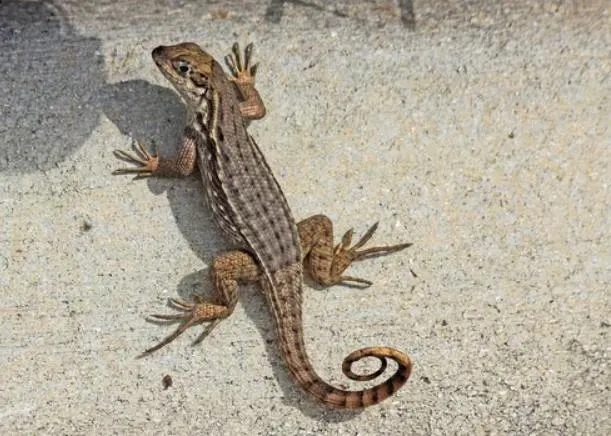The Eastern Fence Lizard (Sceloporus undulatus) is one of the most commonly encountered reptiles in the eastern United States. Known for its spiny scales, wavelike dorsal patterns, and striking blue belly on males, the eastern fence lizard is a fascinating creature. This medium-sized reptile often bask on fences, logs, and rocks, blending seamlessly into its natural environment, thanks to its camouflaging colors. Although widespread and abundant, their unique behaviors and adaptive features make them a captivating subject for nature lovers and herpetologists alike.

Table of Contents
Appearance and Sexual Dimorphism
The Eastern Fence Lizard displays a variety of colors, ranging from brown to gray with prominent wave-like patterns on its back. What makes these lizards especially interesting is their sexual dimorphism, meaning males and females exhibit distinct physical differences. Males are generally smaller and are easily recognizable due to their striking blue coloring on the throat and belly, which they proudly display when trying to attract females or ward off rival males. Females, on the other hand, are slightly larger and lack the vibrant blue markings. They are usually brown or gray, with a more pronounced wavelike pattern on their backs.
These small reptiles, measuring between 4-7 inches in length, possess spiny, keeled scales that give them a rough texture. Despite their tough exterior, their ability to adapt to their environment and escape predators by camouflaging and swift movements reveals their clever survival tactics.
Habitat and Distribution
The Eastern Fence Lizard is widely distributed across the eastern United States and parts of Mexico. They thrive in a variety of environments, including forests, grasslands, and shrublands, but they are most commonly found in pine forests and rocky areas. True to their name, they often perch on fences, where they bask in the sun.
One of the key reasons for their successful distribution is their cryptic coloration, which allows them to blend perfectly with tree bark or other natural surroundings. When threatened, they have a unique tactic of dashing up a tree and hiding on the opposite side to evade predators like snakes, birds, and larger lizards.
Behavioral Characteristics
Eastern Fence Lizards are primarily diurnal, meaning they are most active during the day and sleep at night. Their day-to-day activities largely involve basking in the sun, hunting for
One of the lizard’s most fascinating survival mechanisms is its ability to detach its tail when caught by a predator, a process known as autotomy. The lizard’s tail will regenerate over time, allowing it to escape while the predator is left with only a part of the tail.
Diet and Feeding Habits
As carnivores, Eastern Fence Lizards primarily feed on a wide range of insects and arthropods. They prefer to sit and wait for prey to come within striking distance, rather than actively hunt. Their diet includes:
- Ants
- Beetles
- Spiders
- Grasshoppers
- Moths
Interestingly, females will increase their
Mating and Reproduction
Eastern Fence Lizards have a relatively long breeding season, which spans from April to August. During this time, males perform impressive displays to attract females, showcasing their bright blue bellies and engaging in the familiar head-bobbing and push-up routines.
After mating, the female will lay between 3-16 eggs, with the incubation period lasting 8-10 weeks. Hatchlings are precocial, meaning they are relatively independent from birth, capable of walking and feeding themselves almost immediately. These young lizards start life at about 1.5 to 2.25 inches in length and grow rapidly, reaching sexual maturity in 1-2 years.
Predators and Threats
Eastern Fence Lizards have many natural predators, including snakes, birds, and domestic cats, but one of their most dangerous adversaries is the invasive red fire ant. The venom of these ants can be deadly to the lizards, especially in large numbers. Despite these threats, the species faces few conservation concerns and is currently listed as Least Concern by the IUCN Red List.
Human interaction, including habitat destruction due to urbanization, poses potential risks, but the species is currently thriving. Thanks to their adaptability and varied diet, Eastern Fence Lizards have maintained a healthy population across their range.

Fun Facts About Eastern Fence Lizards
- Sun Worshippers: These lizards are often spotted basking in the sun, helping them regulate their body temperature.
- Tail Tricks: If caught by a predator, they can detach their tails, which will later regenerate.
- Colorful Combat: Males use their bright blue bellies to intimidate rivals during the breeding season.
- Helpful Neighbors: By eating insects and spiders, Eastern Fence Lizards help control pest populations in their environments.
- Not Dangerous: Despite their spiny appearance, these lizards are neither venomous nor poisonous.
Conservation Status
The Eastern Fence Lizard is not currently endangered and is considered to be of Least Concern by conservation organizations. With an estimated population exceeding 1,000,000, these lizards are flourishing in their native habitats. However, like many species, they could be impacted by habitat loss due to human activities and invasive species, such as the red fire ant.
The Eastern Fence Lizard is a resilient and fascinating reptile. With its unique ability to camouflage, its vibrant mating displays, and its role in pest control, this small creature plays an essential part in its ecosystem. Whether basking in the sun or swiftly escaping predators, the Eastern Fence Lizard embodies adaptability and survival at its finest.
- Enchi Ball Python: A Unique and Stunning Morph of Python regius - March 27, 2025
- Emerald Tree Monitor: The Enigmatic Green Guardian of the Rainforest - March 26, 2025
- The Egyptian Cobra (Naja haje): A Fascinating Serpent - March 25, 2025
